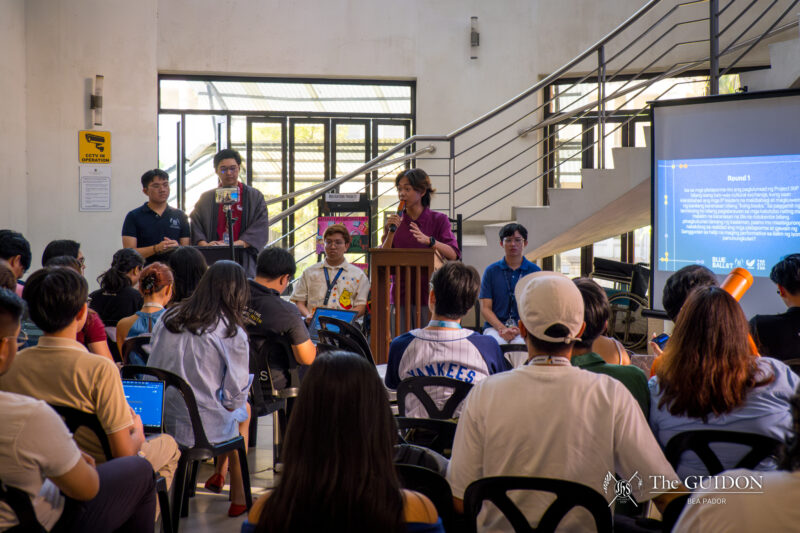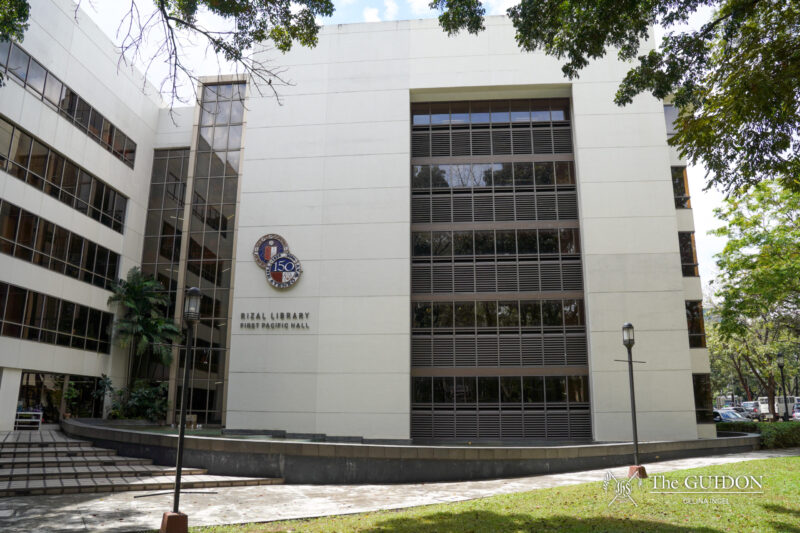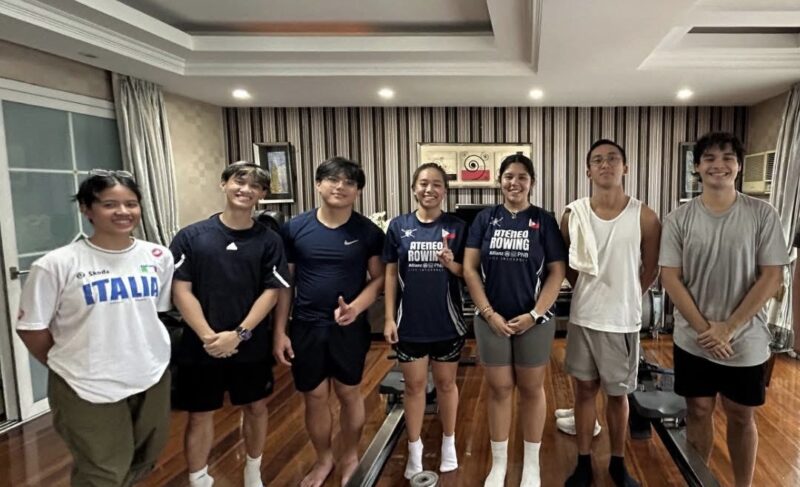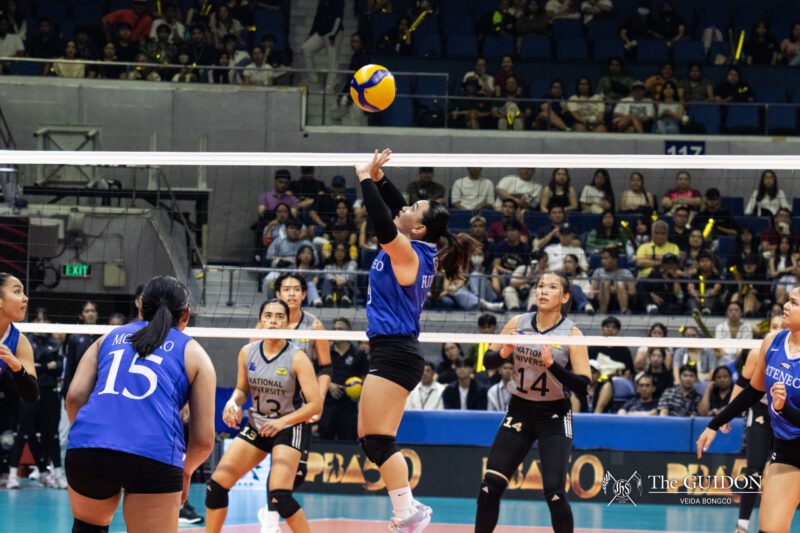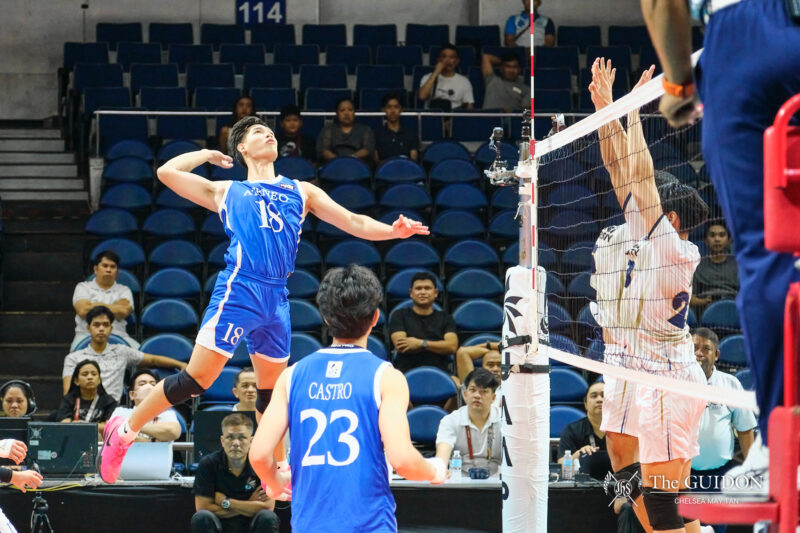AFTER TWO years under the fully online setup, the Loyola Schools (LS) has begun conducting fully onsite classes for the first semester of AY 2022–2023.
According to the VPLS’ memorandum, the LS is now offering two other modalities for learning aside from the fully onsite mode: flex and fully online. Both onsite and flex modes offer face-to-face classes for students, while online learning exclusively occurs on platforms such as Canvas and Zoom.
Given that all modalities still use online components for announcements and other learning materials, Office of Management Information Systems (OMIS) Director James Gregorio assures students that additional Wi-Fi routers will be delivered to the University by October to improve on-campus connectivity. Additionally, more classrooms will be equipped with Wi-Fi coverage by the second semester.
As students now surge to campus for their classes, Office of Health Services (OHS) Director Henrietta de la Cruz, PhD also shares that the OHS is on alert for monkeypox concerns amid emerging cases in the Philippines.
Transitioning to a new setup
Among the three modalities now offered to students, Vice President for the Loyola Schools (VPLS) Maria Luz Vilches, PhD explained that the default mode of classes would be the face-to-face set-up as LS classes are designed in the onsite mode by default pre-pandemic.
“While there is value in online classes, there is no substitute for face-to-face interaction among students and teachers. That kind of interaction is part of learning,” Vilches said.
With students now taking classes in novel setups, the LS also transformed its classrooms, particularly equipping flex classrooms with microphones, speakers, and cameras for blended courses. Aside from OMIS, Vilches explained that the administration also consulted with the Office of Facilities and Sustainability and the Ateneo de Manila University Institute for the Science and Art of Learning and Teaching for the purchase of such gadgets according to audibility and visuals.
HAPPENING NOW: #AskLS First Semester Forum
— The GUIDON (@TheGUIDON) August 1, 2022
The event is streaming on the Loyola Schools Campus Events Management Youtube channel. Watch it live here: https://t.co/CmcccG5uwV | via @zxxyia
Given the broad need for Wi-Fi on campus, Gregorio assured that the PLDT-Convergent Technologies Center (PLDT-CTC) Building, the Matteo Ricci Study Hall, the New Rizal Library, and the Old Rizal Library deliver full Wi-Fi coverage following the recent Wi-Fi expansion plan. Moreover, certain rooms in Bellarmine Hall were designated for online class using the available Wi-Fi routers.
Amid concerns on lagging Wi-Fi connectivity on campus, Gregorio added that the University will receive additional Wi-Fi routers by October, with the goal of equipping even more classrooms with Wi-Fi coverage before the second semester.
Despite these welcomed academic developments into the new normal, Vilches noted coordination among offices and consultations for consensus-building was the major challenge the LS encountered due to time constraints and issue resolutions.
She added that the purchase of necessary gadgets using the University’s budget was another challenge. Ultimately, the administration needed to be “judicious,” and the gadgets that they bought needed to be practical and functional for both students and teachers.
On the other hand, School of Science and Engineering Representative Andrei Narciso added that students raised their own concerns in transitioning to fully onsite classes. Via the Sabihin sa Sanggu platform, they requested assistance for issues such as WiFi connectivity, which were then forwarded to concerned offices like OMIS.
Addressing health and safety concerns
As students surge towards campus for their classes, de la Cruz also reinforced the need to abide by health protocols.
Currently, the OHS utilizes the LS’ Blue Pass system for medical concerns like contract-tracing, student health record-keeping, and online consultations. Moreover, amid looming threats of other virus outbreaks, De la Cruz added that the OHS remains on alert for monkeypox concerns by implementing universal preventive precautions such as mask-wearing and physical distancing.
Moving forward, she explained that the office hopes to improve its services by expanding existing programs, increasing the collaborative nature of health and wellness education, and creating opportunities to share these efforts with other schools and health services.
“The important aspect of Ignatian schools is caring for one another as a community. In enforcing these policies, we don’t police people. We don’t persecute people. […] we want students to develop that concern for others,” de la Cruz said.
Overall, as such changes and transitions take place, Vilches said that the administration would continue to get feedback from teachers and students from administrative reports and University surveys to gauge the LS’ community concerns.
“Learning is a two-day dynamic between teachers and students. We are trying our best to provide the necessary conditions for this dynamic. […] We shall continue to provide the necessary classroom gadgets for teaching and learning,” Vilches said.


